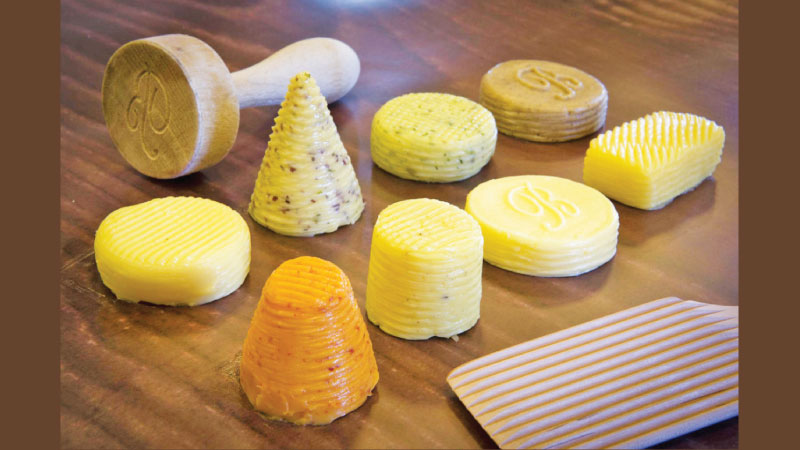What’s France without the baguette? And what’s a baguette without creamy, decadent butter? Well, in the northern region of France in an area called Brittany, Jean-Yves Bordier does butter one bit better.
Using three different types of seaweed, Bordier’s butter brings a special salty earthiness - one that has won over some of the top chefs of our time. His distinctive, delicious handmade butter is sought out the world over. Hong Kong’s L’Atelier de Joël Robuchon, Caprice and Petrus are just a few of the high-end restaurants in Beurre Bordier’s global customer base.
Bordier is a charismatic, entertaining and marketing-savvy sort who made his butter one of France’s best known. One look at the videos on his website show that he’s not afraid of the camera. But there needs to be substance behind the show and Bordier has it in spades.
Bordier is the third generation in a family of fromagiers (cheesemongers). In 1985 he acquired a creamery, La Maison du Beurre, that was founded in 1927.
It’s the art of kneading butter that has helped guarantee the quality. It’s an age-old technique and tradition, one that imparts extra flavour and a noticeably smooth texture. A number of top chefs seem to agree, including Fabrice Vulin at the two Michelin star Tasting Room in Macau’s City of Dreams, a long-time fan of Bordier and his butter.
“I love Bordier’s butter. Silky, complex and aromatic, it brings out the best in a chef’s creations. From generation to generation, the family of Jean-Yves Bordier has passed on their know-how, something that makes a considerable difference as excellence begets excellence.”
The process of producing some of the planet’s best butter starts in the organic dairy farms of Brittany and Normandy. After the milk is collected it is creamed, pasteurised and left to mature for two days, as it thickens and the flavours develop. Different seasons impart different flavours, with floral notes in spring and a sweeter taste in summer.
As Bordier explains, “Butter comes from maternity as it comes from milk, that comes from a cow after giving birth. It concerns all of us. It’s also nature’s blotting paper as its taste changes all year long depending on the cows, the climate, the land and the grass, the flowers that cows eat.”
The next step is churning, gradually separating the solid curds from the liquid whey. The whey is replaced with iced water, before a second churning. It’s a traditional technique, far removed from industrial butter, allowing more of the cream molecules to be preserved. After resting for 24 hours, the butter is ready for the all-important kneading, salting and flavouring.
A kneader is both the person operating it and the equipment, namely a teak frame with a wheel that slowly turns in the opposite direction to the frame. The process oxidises and softens the butter and is complete only when the experienced kneader “feels” it. Kneading times vary, depending on the temperature, the season and the feed given to the cows
Fine salt – once sourced by boiling down local seawater – is added to taste, as the molecules of fat react and release a sort of butter water, something Bordier says is akin to “crying”.
As he explains theatrically, “When my butter cries, it means it is singing!”
Flavouring is next, something Bordier started doing after talking with a fishmonger friend and creating a butter for brill, flavoured with seaweed. There are now 10 flavoured butters including espelette chilli, buckwheat and fennel. Two are distinctly Asian: yuzu butter and a garlic, herb and Sichuan pepper creation. There are also sweet butters – a Madagascan vanilla and a seasonal raspberry butter.
The three natural flavours are unsalted, semi-salted (demi-sel) and salted, the latter of which is the most popular in Bordier’s compact St Malo shop, La Maison du Beurre.
South China Morning Post



Add new comment